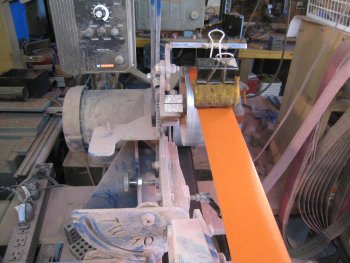RJPRIP
Member
Hello World..
This is my first post and its really more of an inquiry. I have bought a Triple - Laminated Stainless steel "Helle". There is information on their main site regarding preferred sharpening methods for their blades. They mentioned something to the affect that sharpening the knife without oil (or water?) would render their heat treatment inefficient! Is this a commonly known fact in the world of knife making?! Or does this depend solely on Helle's steel and tempering process, or is this just a claim? Will sharpening a Tri-Laminate Sandvik steel (or any stainless or high carbon), by hand & on a stone - without a lubricant, have negative effects on a blades heat treatment? Is it possible Helle is dejecting the method of high power & friction sharpening on a grinding wheel?!
- Thanks for reading and responding, RJPRIP
This is my first post and its really more of an inquiry. I have bought a Triple - Laminated Stainless steel "Helle". There is information on their main site regarding preferred sharpening methods for their blades. They mentioned something to the affect that sharpening the knife without oil (or water?) would render their heat treatment inefficient! Is this a commonly known fact in the world of knife making?! Or does this depend solely on Helle's steel and tempering process, or is this just a claim? Will sharpening a Tri-Laminate Sandvik steel (or any stainless or high carbon), by hand & on a stone - without a lubricant, have negative effects on a blades heat treatment? Is it possible Helle is dejecting the method of high power & friction sharpening on a grinding wheel?!
- Thanks for reading and responding, RJPRIP
Last edited:



